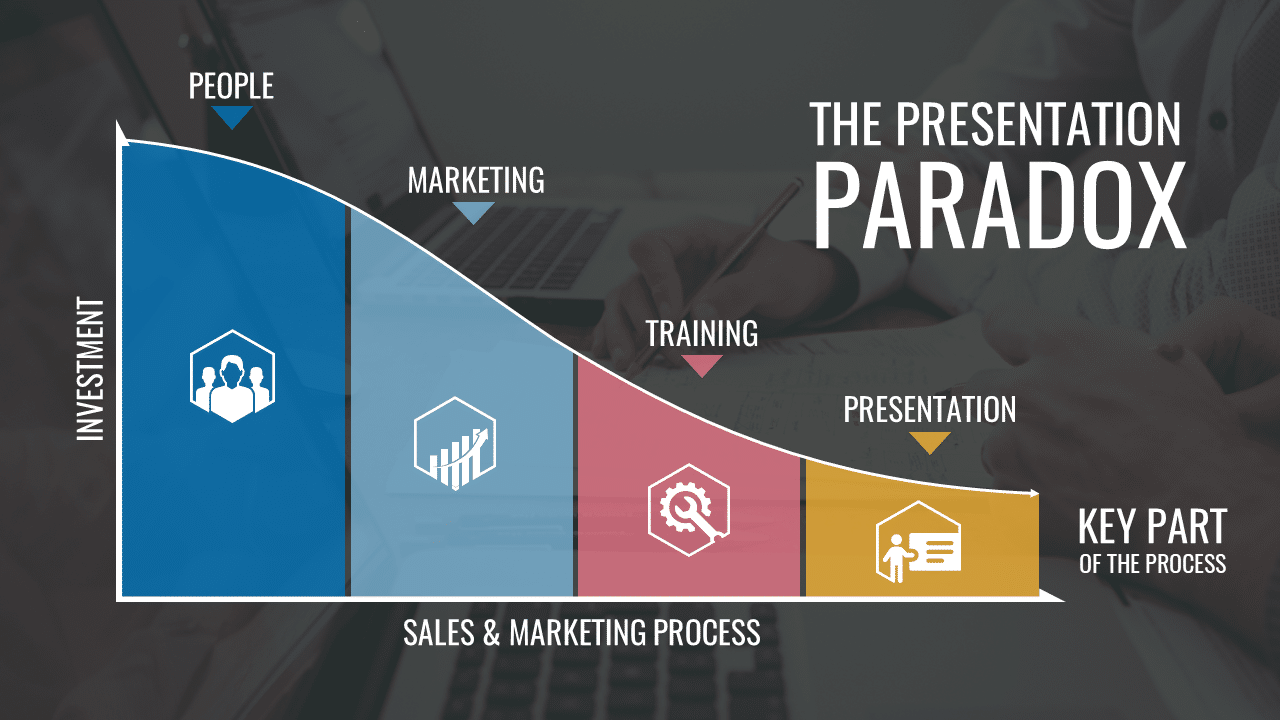I have often joked that should our marketing team ever run short of leads, the best course of action would be to head directly to the nearest Starbucks or Costa at around 9ish on any work day.
The reason? In every coffee shop in every major city in the UK, there are legions of sales people furiously tweaking their PowerPoint presentations prior to their pitches at 10am. Speedy changes to decks (updating prospect names and logos, adding new slides, deleting old slides and, on occasion, reordering the whole caboodle at the very last minute) are all too common… and should be seen as a huge fluorescent flashing warning sign to all involved.
Now don’t get me wrong. I’m a realist and have no issue with people working right up to a deadline (heck, this article is a case in point – just ask the Editor!) but when the investment up to this point has been so huge, it all seems horribly risky.
“Investment?”, I hear you cry. “What do you mean, investment? Surely it’s just another sales meeting…” Well let me explain.
Like it or not, every sales meeting is the result of a lot of investment. Sales opportunities do not fall out of the sky – they are the culmination of a hell of a lot of work. From the purgatory of cold calling, late nights or weekend work put in to evaluate the opportunity (and competition), money spent on marketing campaigns, investment in the salesperson in the shape of training and professional development and, lest we forget, the pain of dragging yourself out of bed at 5am to ensure you get to the prospect’s office in time. No matter how you calculate it, you as the sales professional, your colleagues and your business have put in a huge amount of effort and money in order to get you in front of the prospect in the first place. Yet despite all of this investment, sales professionals find themselves, Americano in hand, making changes to their most important sales tool MINUTES before going into the meeting.
It’s madness… yet so common that we’ve given it a name – the Presentation Paradox.
The symptoms of the Presentation Paradox are easy to spot (you may recognise some of these). Slide upon slide stuffed with overly detailed content (just in case the prospect asks a question about an obscure feature of product), more focus on your business than theirs (tell-tell signs include unnecessary pictures of your HQ, a world map with pins stuck in it to show where you have offices and meaningless revenue and EBITDA charts) and a distinct lack of any clear message.
In short, a fair description of most sales presentations currently in circulation.
This is a crying shame. Sales presentations should be viewed as a ‘moment of truth’ – the opportunity to take an interested prospect and turn them into a valuable and loyal customer. A tipping point between a wasted journey and a success. Get your sales presentation design and messaging right and the future looks bright… mess it up and all that investment (including the coffee) goes out of the window.
But not only does the Presentation Paradox make no sense once you have got your head around quite how high the stakes are, it can also end up costing you a fortune. Last minute chopping and changing of slides can not only lead to a fragmented and frankly confusing presentation (again, something so common we’ve given it a name – Presentationstein), but it can lead you into the murky world of ‘Find & Replace’. Alas this quick technology fix for re-purposing old slides does not get you off the hook – the reality is that you have to actually think and take ownership. In the end, it’s your responsibility for what is being shared with your audience… and, as such, you need to take the consequences when it goes awry on the chin. For example, put yourself in the shoes of the poor Nike exec whose PowerPoint blunder cost the business the estimated equivalent of $14 Billion of marketing value to Under Armour.
Gulp…
So my advice is elegantly simple – recognise that each and every sales presentation as a huge privilege. Your audience is giving up their precious time to listen to your message, your business has invested considerable amounts to get you the opportunity in the first place and, lest we forget, you’ve had to put the hours in to convert a lead into a meeting. Don’t waste all of this investment and energy by not taking the presentation part of the process seriously – prepare, adjust the presentation and rehearse in the days leading up to the meeting, not 30 minutes before.
So, next time you find yourself in a coffee shop before a pitch, take time to enjoy the coffee, read the paper or simply ponder the meaning of life… but for the sake of everyone else involved, PLEASE step away from the PowerPoint.





